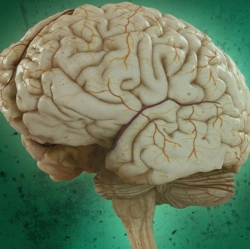
The developing brain eliminates unneeded connections between neurons during early childhood. Now researchers from the Salk Institute for Biological Studies and Carnegie Mellon University have determined the rate at which that happens, and the implications of that finding for computational networks.
Neurons create networks through a process called pruning. At birth and throughout early childhood, the brain’s neurons make a vast number of connections, many more than the brain actually needs to function. So as the brain matures and learns, it begins to quickly cut away connections that aren’t being used.
When the brain reaches adulthood, it has about 50 to 60 percent less synaptic connections than it had at its peak in childhood. Understanding how the network of neurons in the brain organizes to form its adult structure is key to understanding how the brain learns and functions.
“By thinking computationally about how the brain develops, we questioned how rates of synapse pruning may affect network topology and function,” says Saket Navlakha, assistant professor at the Salk Institute’s Center for Integrative Biology and a former postdoctoral researcher in Carnegie Mellon’s Machine Learning Department.
“We have used the resulting insights to develop new algorithms for constructing adaptive and robust networks in other domains.” The findings were recently published in an open-access paper in PLOS Computational Biology,
But the processes the brain and network engineers conventionally use to learn the optimal network structure are very different. Computer science and engineering networks initially contain a small number of connections and then add more connections as needed.
“Engineered networks are built by adding connections rather than removing them. You would think that developing a network using a pruning process would be wasteful,” says Ziv Bar-Joseph, associate professor in Carnegie Mellon’s Machine Learning and Computational Biology departments. “But as we showed, there are cases where such a process can prove beneficial for engineering as well.”
The researchers first determined key aspects of the pruning process by counting the number of synapses present in a mouse model’s somatosensory cortex over time. After counting synapses in more than 10,000 electron microscopy images, they found that synapses were rapidly pruned early in development, and then as time progressed, the pruning rate slowed.
The results of these experiments allowed the team to develop an algorithm for designing computational networks based on the brain pruning approach. Using simulations and theoretical analysis they found that the neuroscience-based algorithm produced computer networks that were much more efficient than the current engineering methods. The flow of information was more direct, and provided multiple paths for information to reach the same endpoint, minimizing the risk of network failure.
